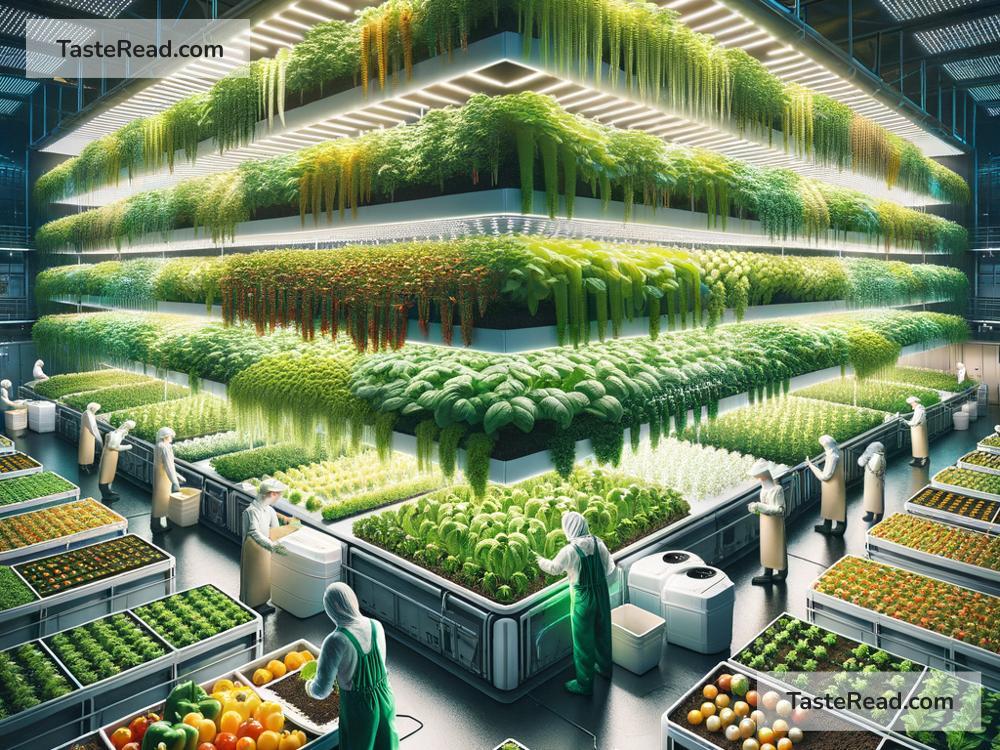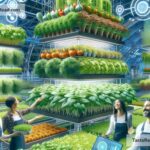The Future of Food and Regenerative Global Practices
Have you ever thought about where your food comes from or how it’s grown? Food is one of the most important parts of our lives, yet many of us don’t think about its journey from farm to plate. As our world changes, especially with a growing population and climate challenges, the way we produce and consume food needs to change too. The future of food lies in more innovative, sustainable, and regenerative practices. These methods not only help the planet but ensure food security for generations to come.
The Challenges Facing Food Today
Our global food system is under pressure. Over 8 billion people live on Earth today, and feeding everyone is a big task. But traditional farming practices can harm the planet. For example:
-
Soil Degradation: Many farms rely on methods that strip the soil of nutrients over time, making it harder to grow healthy crops.
-
Deforestation: Large-scale farming often clears forests to make space for crops or livestock, which destroys ecosystems and contributes to climate change.
-
Water Use: Agriculture uses a lot of water. In some areas, farming is draining rivers and underground water sources faster than they can be refilled.
-
Climate Change: Rising temperatures, unpredictable weather patterns, and droughts are already affecting how and where food can be grown.
These challenges create a big question: how can we continue feeding billions of people while protecting the planet? The answer may lie in regenerative practices.
What Are Regenerative Practices?
Regenerative practices are ways of farming and producing food that focus on giving back to the Earth rather than taking from it. Instead of treating land, animals, and resources as something to exploit, regenerative methods aim to heal ecosystems and improve them for future use.
Some of the core principles of regenerative practices are:
-
Improving soil health: Healthy soil is the foundation of farming. By using techniques such as composting, planting cover crops, and rotating crops, farmers can restore nutrients in the soil and make it better at storing carbon and water.
-
Minimizing chemical use: Synthetic fertilizers and pesticides can damage the environment over time. Regenerative farming promotes natural solutions, like using insects to manage pests or planting crops that naturally enrich the soil.
-
Encouraging biodiversity: Instead of growing one type of crop (monoculture), regenerative farms often grow multiple crops together. This creates healthier ecosystems, protects species, and reduces the risk of crop failure.
-
Protecting water sources: Regenerative practices aim to use water efficiently and prevent pollution of rivers, lakes, and oceans.
These changes are good for the planet and the people who live on it. Healthy soil grows healthier food, clean water ensures better health, and diverse ecosystems lead to a more balanced environment overall.
What Will the Future of Food Look Like?
The way we eat and farm is evolving rapidly, thanks to advancements in science, technology, and awareness of global issues. The future of food could look very different from what we know today:
-
Urban Farming: As cities grow, urban farming is becoming more popular. Rooftops, vertical gardens, and indoor hydroponic systems allow people to grow fresh food closer to where they live. This reduces the need for transporting food long distances and boosts access to local, healthy produce.
-
Plant-Based Diets: Eating plants is better for the planet than eating lots of meat. Many people around the world are shifting to plant-based diets, and companies are creating delicious meat and dairy alternatives that require fewer resources to produce.
-
Lab-Grown Food: Scientists can now grow food, like meat and seafood, in labs instead of farms. This technology, while still developing, could reduce pressure on land and protect endangered species.
-
Reducing Food Waste: Nearly one-third of all food produced is wasted globally. In the future, smarter ways of storing, distributing, and consuming food could help reduce waste. For example, apps now connect people with restaurants or stores offering leftover food at a discount.
-
Regenerative Agriculture: More farmers are embracing regenerative practices. Governments and organizations are also offering incentives to support sustainable farming methods. As awareness grows, we may see a big shift in how food is produced globally.
Why Regenerative Practices Matter
Regenerative practices aren’t just trendy ideas—they are essential for a healthier planet and a fairer food system. By focusing on healing the Earth, these methods address many urgent issues like climate change, hunger, and environmental damage. Regenerative farming benefits everyone: farmers can have better yields in the long term, consumers can enjoy healthier food, and future generations can inherit a thriving planet.
In addition to agriculture, regenerative principles can be applied to fisheries, forestry, and even food packaging. For example, fish farming can focus on preserving ocean ecosystems, while new materials for packaging, like edible plastics, reduce waste.
What Can You Do?
You don’t have to be a farmer or a scientist to be part of this movement. Everyone can make small changes to support the future of food:
- Buy local and seasonal produce to reduce food transportation costs and support local farmers.
- Eat less meat and try plant-based meals.
- Reduce your food waste by planning meals and freezing leftovers.
- Choose foods grown using sustainable farming practices.
The decisions we make every day can push the food system toward a healthier and regenerative future.
Final Thoughts
The future of food is both exciting and challenging. By embracing regenerative practices and rethinking how we grow and consume food, we can build a system that nourishes people and helps the planet thrive. Whether it’s eating more plants, supporting local farmers, or reducing waste, we all have a role to play.
It’s not just about fixing problems—it’s about creating a better, healthier world for everyone. Together, we can transform the way we eat, farm, and live, ensuring a brighter future for generations to come.


